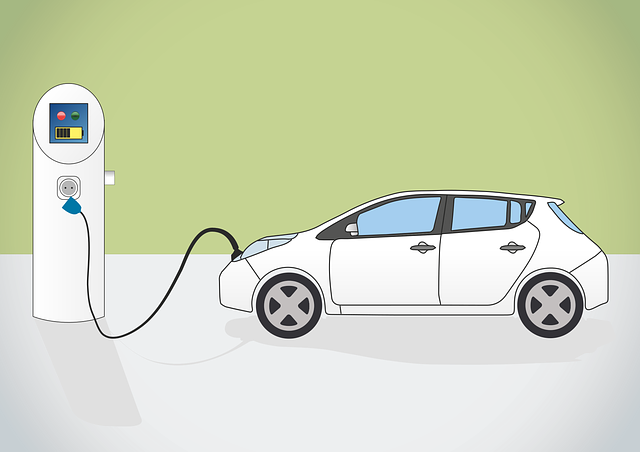Looking to register your car in California? This comprehensive guide walks you through the process, ensuring a smooth experience. First, understand the eligibility requirements and gather essential documents. Then, visit a California DMV office or use their online system. The article details each step, including fees and verification of your vehicle’s crucial VIN using official DMV tools.
- Understand Eligibility Requirements for Car Registration in California
- Gather Necessary Documents for Vehicle Registration
- Visit a California DMV Office or Use the Online System
- Complete the Registration Process: Steps and Fees
- Verify Your Vehicle's VIN (Vehicle Identification Number) with DMV
Understand Eligibility Requirements for Car Registration in California

Before you begin the registration process, it’s crucial to understand the eligibility requirements for car registration in California. To register your vehicle, your car must meet specific criteria set by the Department of Motor Vehicles (DMV). One key step is ensuring your car has a valid and accurate Vehicle Identification Number (VIN) verifier, which can be obtained through a DMV-approved source. This process verifies that your car’s VIN is genuine and matches the manufacturer’s records.
Additionally, to qualify for registration, your vehicle should be in good working condition, have a current safety inspection certificate, and meet all environmental standards set by the state. If you’re opting for a mobile vin inspection or using a mobile vin verification service, ensure that the provider is reliable and authorized to conduct such checks. This approach can streamline the registration process, making it more convenient for California residents.
Gather Necessary Documents for Vehicle Registration

Before registering your car in California, ensure you have all the required documents ready. The California Department of Motor Vehicles (DMV) will need proof of ownership, which typically includes a vehicle title or a bill of sale. Additionally, you’ll require a current and valid registration from the state where the vehicle was previously registered, along with a completed Vehicle Registration Application form. An essential piece of documentation is the Vehicle Identification Number (VIN) verification. This can be obtained through various methods, including using a DMV VIN verifier or opting for a mobile vin inspection/verification service, which offers convenience and efficiency.
It’s crucial to have accurate and up-to-date information for your vehicle, such as the make, model, year, and VIN number. These details are necessary for the DMV to process your registration and ensure compliance with California’s regulations. Having all these documents prepared will streamline the registration process and help avoid any delays or additional fees.
Visit a California DMV Office or Use the Online System

When registering your car in California, you have two primary options to get started: visit a local DMV office or utilize the online system. The former involves queuing at a physical location, filling out paperwork, and potentially waiting for processing. However, many Californians prefer the convenience of the latter approach, which allows them to complete the registration process from the comfort of their homes.
For those opting for the digital route, a crucial step is using a DMV VIN verifier. This tool enables you to verify your vehicle’s information, including its history and potential recalls, by inputting the unique 17-character Vehicle Identification Number (VIN). By availing of this service, whether through an online platform or a mobile vin inspection/verification app, you can ensure that your car is safe and compliant with California’s registration requirements before finalizing the registration process.
Complete the Registration Process: Steps and Fees

After gathering all the necessary documents, it’s time to complete the registration process at the California DMV (Department of Motor Vehicles). The procedure involves several steps and fees, ensuring your vehicle is legally registered and insured. Start by visiting your nearest DMV field office or scheduling an appointment online for a more efficient experience. Bring your completed application form, along with proof of insurance and identification.
One crucial step in the process is verifying the Vehicle Identification Number (VIN). The DMV offers both in-person and mobile VIN verification services. For convenience, consider using their mobile app for real-time VIN inspection, ensuring your vehicle’s details are accurate before registration. Fees apply for registration, including a base fee plus emissions testing or a seasonal surcharge if applicable. Ensure you pay the correct amount to avoid delays in getting your car registered.
Verify Your Vehicle's VIN (Vehicle Identification Number) with DMV

Before you begin the registration process, it’s crucial to ensure your vehicle’s Vehicle Identification Number (VIN) is legitimate and can be verified by the California Department of Motor Vehicles (DMV). This step is essential as a valid VIN is required for registration and helps in confirming the history and authenticity of your car. Use a reliable dmv vin verifier or even a mobile vin verification app to cross-check the number against the DMV’s records. This simple process can save you time and potential headaches later on, ensuring that both you and the state have accurate information about your vehicle.
Performing a vin inspection by checking with the DMV not only safeguards against fraud but also ensures compliance with California’s registration requirements. It’s a straightforward step that can be completed quickly, typically online or via a phone call. So, make sure to double-check and verify before proceeding with any paperwork to avoid delays in registering your car.
Registering a car in California is a straightforward process once you meet the eligibility requirements. By gathering all necessary documents and either visiting a DMV office or using the online system, you can complete the registration process efficiently. A crucial step is verifying your vehicle’s VIN with the DMV to ensure accuracy. Utilize a trusted dmv vin verifier to simplify this task and avoid any potential issues. With these steps and keywords in mind, you’re well-prepared to navigate California’s car registration process like a pro.
